Pointes brasées au carbure sont une pierre angulaire des applications industrielles modernes, offrant des performances exceptionnelles dans les processus de coupe, de perçage et d'usinage. Si vous vous êtes déjà demandé comment ces composants minuscules mais puissants prennent vie, quelles sont leurs applications ou comment choisir les meilleurs, vous êtes au bon endroit. Nous allons vous présenter tout cela de manière attrayante et détaillée, sans jargon ennuyeux !
Qu'est-ce qu'un embout brasé au carbure ?
Imaginez un outil à arêtes vives capable de trancher les métaux les plus durs comme un couteau chaud dans du beurre. C'est essentiellement ce que fait une pointe en carbure brasée ! Il s'agit d'une plaquette de coupe en carbure, liée au corps de l'outil par brasage. Ces pointes sont appréciées pour leur dureté imbattable, leur résistance à l'usure et leur capacité à fonctionner dans des environnements à haute température.
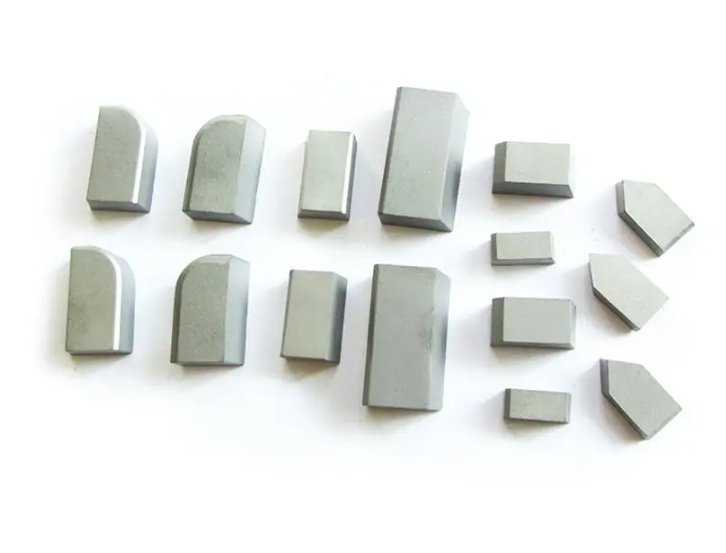
Types de Pointes brasées au carbure
Voici un tableau catégorisé présentant les différents types de pointes brasées au carbure ainsi que leurs caractéristiques :
| Type | Utilisation primaire | Matériaux typiques | Caractéristiques principales |
|---|---|---|---|
| Conseils généraux de coupe | Découpe du métal et du bois | Carbure de tungstène | Haute durabilité, multi-usages |
| Conseils de tournage | Tours et machines CNC | Alliages de cobalt et de nickel | Résistance supérieure à la chaleur |
| Conseils pour le forage | Perçage de haute précision | Composite de carbure de titane | Des performances précises et fluides |
| Conseils de fraisage | Opérations de fraisage à haut rendement | Mélanges de carbure de chrome | Longue durée de vie en cas d'utilisation intensive |
| Conseils pour le rainurage | Applications de rainurage de précision | Carbure de tungstène et de titane | Amélioration du contrôle et de la précision des copeaux |
| Conseils de rabotage | Rabotage des surfaces métalliques | Carbure de tungstène à grain fin | Excellente finition de surface |
| Conseils ennuyeux | Forage de trous profonds | Carbure de tungstène submicronique | Rigidité et résistance exceptionnelles |
| Conseils pour l'enfilage | Coupe de filets sur matériaux | Carbure lié au nickel | Profil de fil cohérent |
| Conseils résistants à l'usure | Outils d'exploitation minière et de terrassement | Composite multi-carbures | Résistance élevée aux chocs et à l'abrasion |
| Conseils spécialisés | Applications personnalisées | Mélanges de carbure sur mesure | Des propriétés uniques selon les besoins |
Analyse des matières premières et de la composition
Les pointes brasées en carbure doivent leurs prouesses aux matériaux de pointe utilisés pour leur fabrication. Ces matériaux sont finement mis au point pour répondre à des exigences industrielles spécifiques. Voyons plus en détail la composition des matières premières.
- Carbure de tungstène (WC) : Le pilier des pointes en carbure, offrant une dureté et une résistance inégalées.
- Cobalt (Co) : Utilisé comme liant, le cobalt maintient les grains de carbure ensemble, ce qui garantit leur solidité.
- Le nickel (Ni) et le chrome (Cr) : Ajoute une résistance à la corrosion et une stabilité thermique.
- Carbure de titane (TiC) : Augmente la résistance à l'usure pour les applications à haute vitesse.
- Autres additifs : Les produits sont adaptés pour affiner les propriétés telles que la ténacité, la résistance à l'oxydation ou la conductivité thermique.
Applications des pointes brasées au carbure
La polyvalence des pointes brasées au carbure est stupéfiante. Voici comment elles se distinguent dans tous les secteurs d'activité :
| L'industrie | Applications | Principaux avantages |
|---|---|---|
| Automobile | Usinage de pièces de moteur, coupe d'engrenages | Précision, rapidité, durabilité |
| Aérospatiale | Composants de moteurs à réaction, perçage de cellules d'avion | Résistance élevée à la chaleur et à l'usure |
| Travail du bois | Façonnage, rabotage et sculpture du bois | Coupes lisses et bords durables |
| Exploitation minière | Outils de forage et de terrassement | Résistance aux chocs et à l'abrasion |
| Pétrole et gaz | Filetage de tuyaux, usinage de vannes | Corrosion et manipulation à haute température |
| Fabrication métallique | Usinage général, opérations de tournage | Polyvalence et haute qualité de finition |
| Électronique | Perçage de circuits imprimés et découpe fine de composants | Précision de l'ordre du micron |
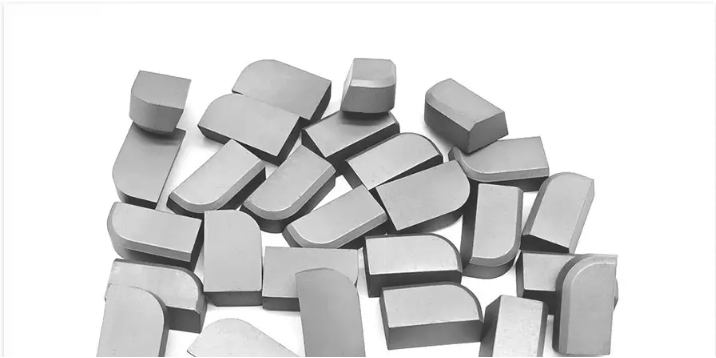
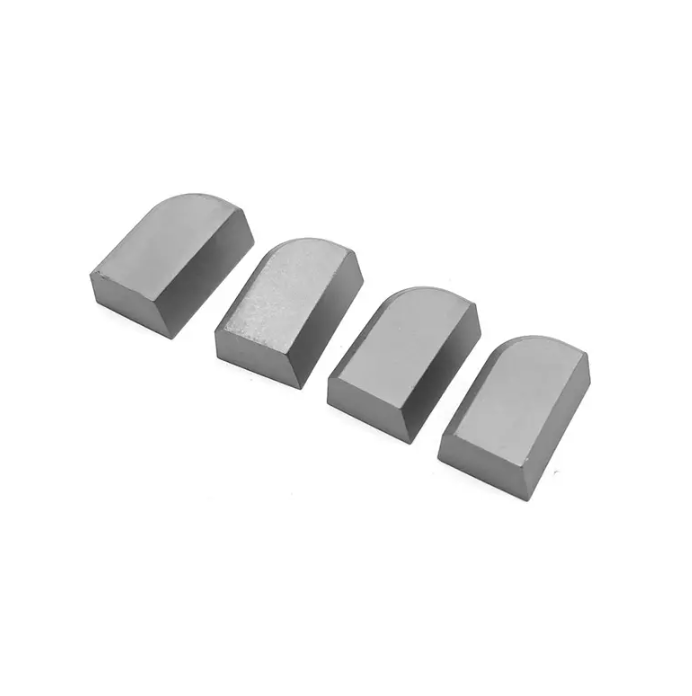
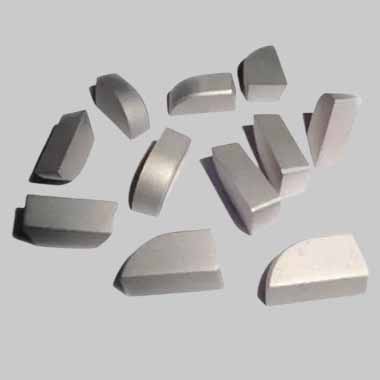
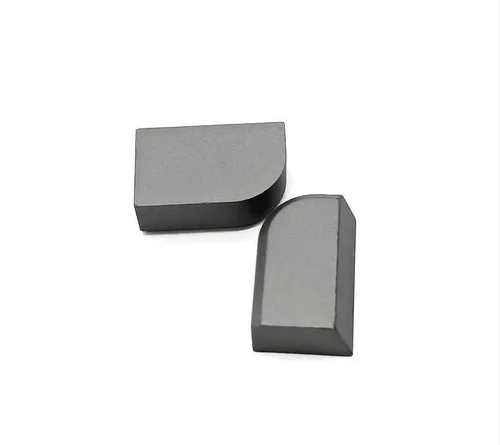

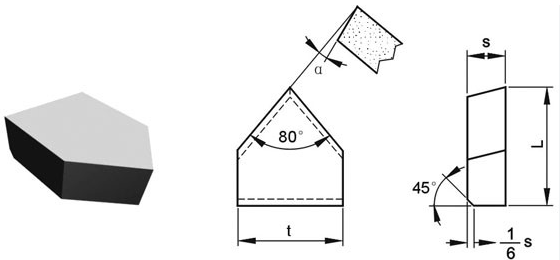
Déroulement du processus de production Pointes brasées au carbure
Vous êtes-vous déjà demandé comment sont fabriquées les pointes brasées en carbure ? Il s'agit d'un processus méticuleux faisant appel à une technologie de pointe et à une ingénierie précise. Voici comment se déroule la production :
- Préparation de la poudre : Le tungstène, le cobalt et d'autres poudres sont mélangés pour obtenir la composition souhaitée.
- Le compactage : La poudre est comprimée dans la forme souhaitée.
- Frittage : Les pointes compactées sont chauffées à haute température pour obtenir la densité et la dureté souhaitées.
- Broyage : Meulage précis pour obtenir des arêtes vives et des dimensions spécifiées.
- Brasage : La pointe est fixée au corps de l'outil par un procédé de brasage utilisant des alliages de remplissage à haute température.
- Inspection et essais : Un contrôle de qualité rigoureux garantit des performances de premier ordre.
- Emballage : Enfin, les pointes sont emballées pour être expédiées et stockées.
Propriétés des matériaux des pointes brasées en carbure
| Propriété | Plage de valeurs | Importance |
|---|---|---|
| Dureté | 89-94 HRA | Détermine la résistance à l'usure |
| Résistance à la flexion | 1500-3000 MPa | Indique la résistance à la flexion sous contrainte |
| Densité | 14,5-15,5 g/cm³ | Affecte l'équilibre et le poids de l'outil |
| Conductivité thermique | 75-125 W/mK | Assure la dissipation de la chaleur pendant l'usinage |
| Module d'élasticité | 450-700 GPa | Fait preuve de raideur et de rigidité |
| Résistance à la rupture | 9-13 MPa-m¹/² | Indique la résistance à la propagation des fissures |
Caractéristiques principales : Composition et caractéristiques
| Élément | Pourcentage (%) | Fonctionnalité |
|---|---|---|
| Carbure de tungstène | 85-90 | Procure à l'arête de coupe une dureté inégalée |
| Cobalt | 8-12 | Liaison des grains de carbure et renforcement de la ténacité |
| Carbure de titane | 0-3 | Augmente la résistance à l'usure |
| Chrome | 0-1 | Augmente la résistance à la corrosion |
Paramètres de performance : Dureté, solidité et résistance à l'usure
| Paramètres | Grade A | Note B | Grade C |
|---|---|---|---|
| Dureté (HRA) | 92 | 90 | 88 |
| Résistance à la flexion (MPa) | 2500 | 2200 | 2000 |
| Résistance à l'usure (mm³) | Haut | Moyen | Faible |
Spécifications, tailles, formes et normes
| Spécifications | Gamme disponible | Normes |
|---|---|---|
| Dimensions de l'embout | 10-50 mm (L), 2-10 mm (T) | ISO 513, ANSI B212.1 |
| Formes | Ronde, carrée, triangulaire | ISO 1832 |
| Tolérance | ±0,02 mm | DIN 69881 |
Fournisseurs et détails des prix
| Nom du fournisseur | Région | Fourchette de prix (par unité) | Délai d'exécution |
|---|---|---|---|
| XYZ Carbide Inc. | Amérique du Nord | $2.00-$5.00 | 2-3 semaines |
| Global Tool Parts | L'Europe | $1.50-$4.50 | 1-2 semaines |
| Métaux durs de précision | Asie | $1.00-$3.50 | 2-4 semaines |
Choisir le bon Pointe en carbure brasée
| Facteur | Principaux éléments à prendre en compte |
|---|---|
| Matériau à découper | Métaux durs et matériaux plus tendres comme le bois |
| Géométrie de l'embout | Forme et angles adaptés à l'application prévue |
| Conditions de fonctionnement | Environnements à forte chaleur, à grande vitesse ou abrasifs |
| Budget | Compromis entre le coût et la performance |
| Réputation du fournisseur | Cohérence et assurance qualité |

Avantages et limites
| Avantages | Limites |
|---|---|
| Dureté et résistance à l'usure extrêmes | Coût initial plus élevé |
| Polyvalence dans les secteurs d'activité | Fragile dans les situations d'impact extrême |
| Longue durée de vie de l'outil et réduction des temps d'arrêt | Nécessite une manipulation précise |
FAQ
| Question | Réponse |
|---|---|
| Qu'est-ce qui rend les pointes brasées au carbure si efficaces ? | Leur combinaison de dureté, de ténacité et de résistance à la chaleur. |
| Les pointes en carbure peuvent-elles être réutilisées ? | Ils peuvent être réaffûtés, mais leur performance peut se dégrader après plusieurs utilisations. |
| Comment choisir la pointe la mieux adaptée à mon projet ? | Tenez compte du matériau, de la forme et des exigences spécifiques de l'application. |
| Les pointes en carbure sont-elles chères ? | Bien que leur coût initial soit plus élevé, leur durabilité permet de réaliser des économies à long terme. |




